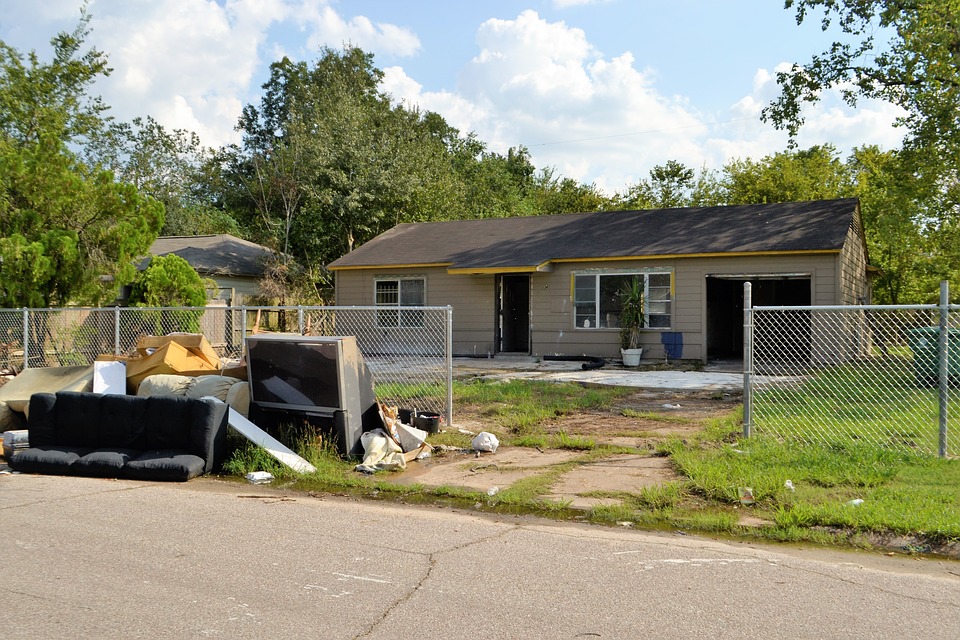Texas lawmakers have requested an additional $18.7 billion in federal aid for recovery efforts from the damage left behind by Hurricane Harvey.
On Thursday, Sens. John Cornyn and Ted Cruz, along with other members of Congress and Gov. Greg Abbott, delivered the request in a letter to House and Senate appropriators. The bipartisan request comes on top of President Donald Trump’s request Wednesday for $29 billion for hurricane aid- $13 billion for Federal Emergency Management Agency relief efforts and $16 billion for the financially troubled federal flood insurance program. Trump’s request was delivered in a letter to the House and Senate appropriations committees.
Congress last month approved a $15.3 billion aid package that combined community development block grant rebuilding funds with emergency money for cleanup, repair and housing. This amount included $7.4 billion for the Disaster Relief Fund within FEMA, $450 million for the Disaster Loan Program within the Small Business Administration, and $7.4 billion for the Community Development Block Grant Disaster Recovery Program.

Congress extended the flood insurance program in early September as part of a short-term deal that also covered the federal budget and the debt ceiling, extending the program’s authorization through Dec. 8. But by the time that program expires, analysts say, Congress will have maxed out the $30.4 billion debt limit that the program now has.
If $18.7 billion is approved in the next Supplemental Appropriations bill, the funds requested include:
• $10 billion to the U.S. Army Corps of Engineers (USACE). The purpose of these funds would be to rehabilitate and repair damages to completed USACE projects and those under construction, to implement authorized projects ready for construction, to dredge Federal navigation channels, and for emergency response and recovery operations, repairs and other activities. According to the letter, “the swifter these projects are funded, the sooner we will reduce future loss of life and economic exposure from subsequent storms. Further, protecting critical infrastructure and returning to normal operations is a matter of economic and national security, with Harvey already causing a $20 billion economic impact from damage to Texas ports.”
• $150 million for transportation infrastructure. The U.S. Department of Transportation’s Emergency Relief Program and the Public Transportation Emergency Relief Program can provide Texas with immediate resources for transportation infrastructure repairs.
• $7 billion to the Community Development Block Grant Disaster Recovery (CDBG-DR) program. H.R. 601 appropriated $7.4 billion for this program, to remain available until expended, for all major disasters declared in 2017. Early estimates from the State of Texas indicate a total need of over $40 billion in CDBG-DR funds. Due to the projected unmet needs of the state, and the impact of Hurricanes Irma and Maria, an additional down payment of CDBG-DR funds has been requested in the next emergency supplemental.
• $800 million for state education agencies. In the past, emergency supplemental packages have included funding for Local Educational Agencies, schools and institutions of higher education that were affected by natural disasters. To ensure there is minimal disruption, a request has been made that will provide emergency assistance to educational institutions with unexpected expenses as a result of Hurricane Harvey.
• $450 million for the U.S. Small Business Administration’s (SBA) disaster loans program. The SBA provides low-interest disaster loans to businesses, private non-profit organizations, homeowners and renters. SBA loans are often the first form of federal assistance available for individuals and business for disaster recovery.
• $300 million for the U.S. Economic Development Administration (EDA). The EDA through the Department of Commerce, plays a role in facilitating the delivery of economic assistance to local governments for long-term recovery planning, reconstruction and resiliency in response to presidentially declared disasters or emergencies. EDA grants, awarded through a competitive application process, emphasize disaster resiliency to help mitigate the potential for economic hardship as a result of future weather events.
Last week, Gov. Abbott presented Houston Mayor Sylvester Turner a $50 million check for Hurricane Harvey relief. After receiving the funds Turner rescinded a proposed property tax hike for his city.
The money comes from a $100 million disaster relief fund appropriated to Abbott’s office during the last legislative session. The money will go toward immediate relief needs such as reconstruction. Abbott said long-term recovery and preventive measures would be funded by the federal government and the state’s $10 billion savings account, known as the Rainy Day Fund, but not until exact costs for recovery are known.
Strategic Partnerships, Inc. is one of the leading procurement consulting firms in the U.S. Contact them today to learn how to increase your public sector sales.
